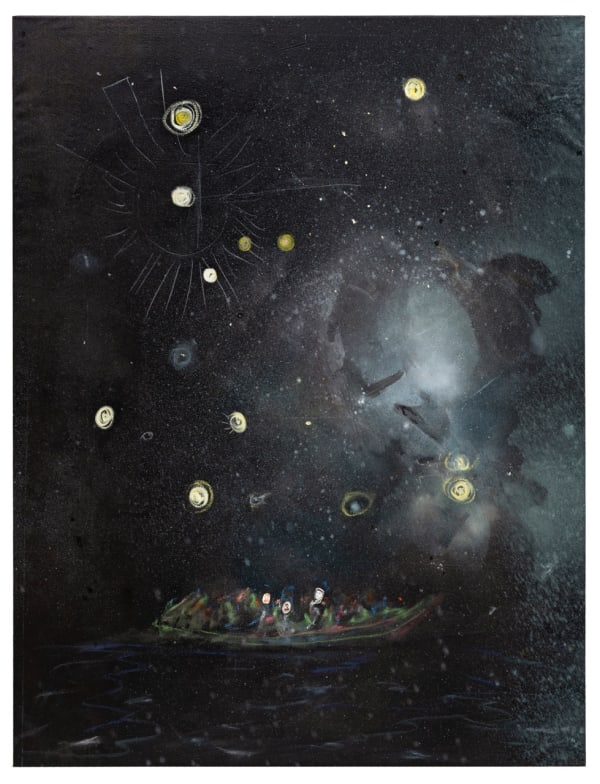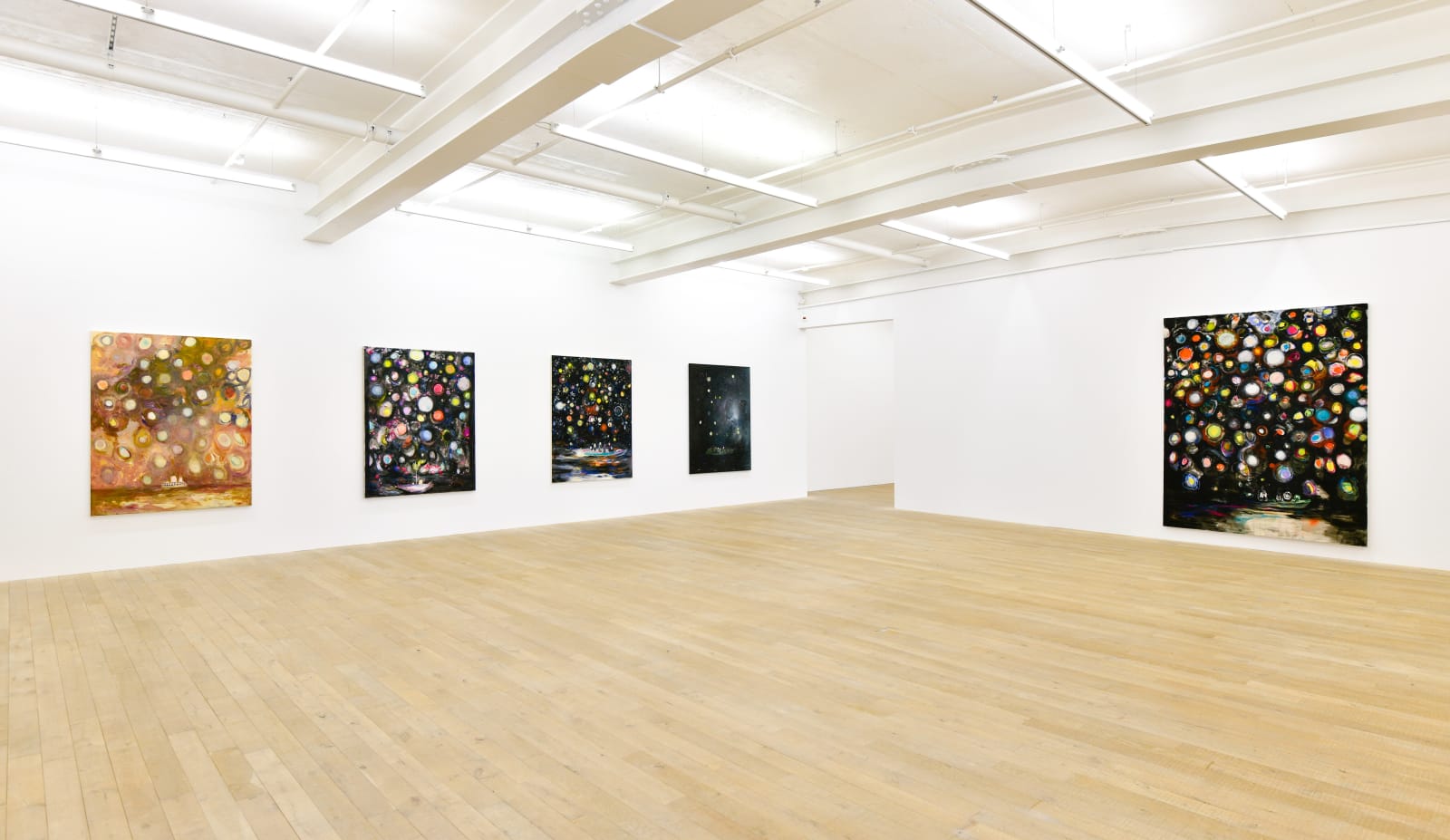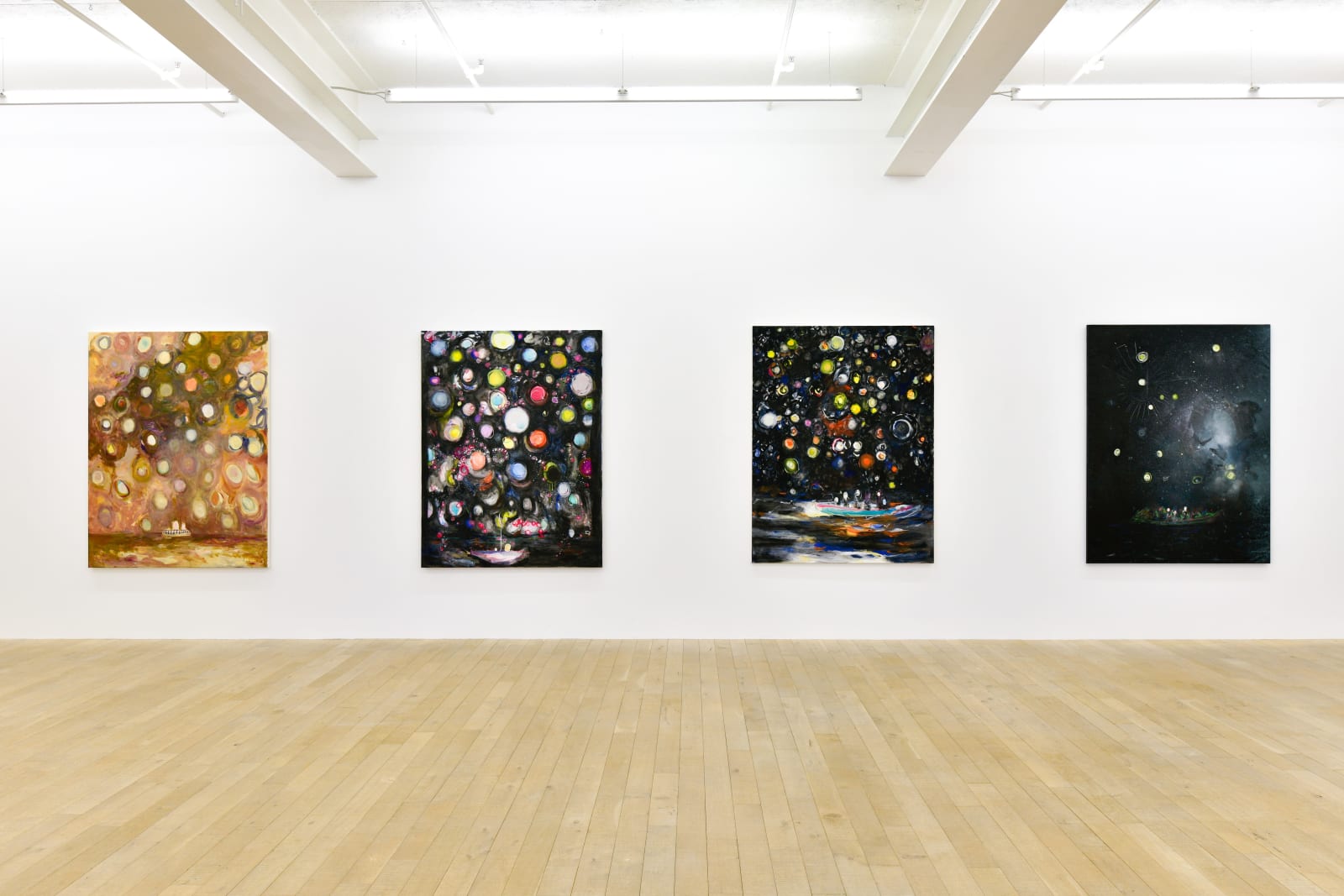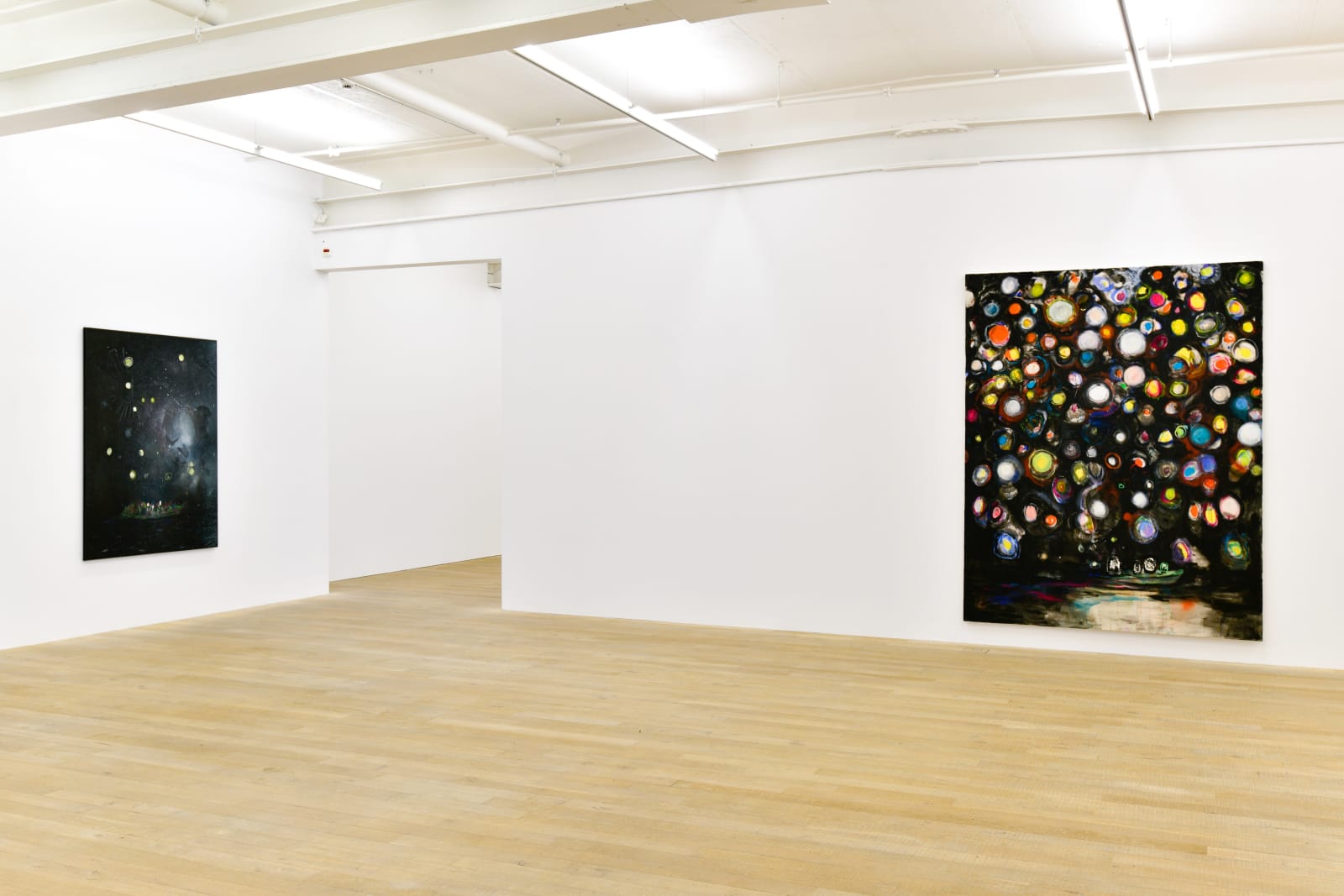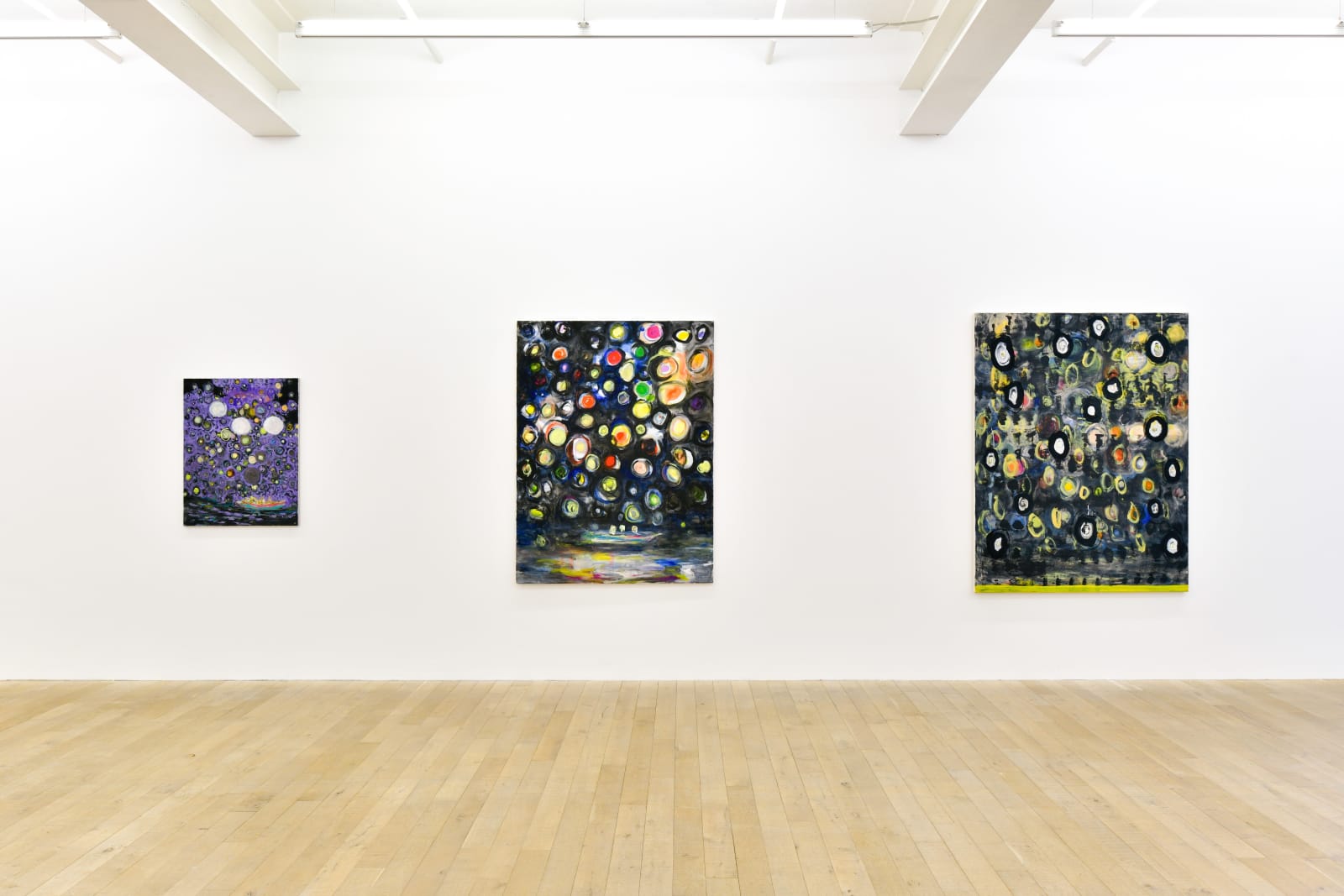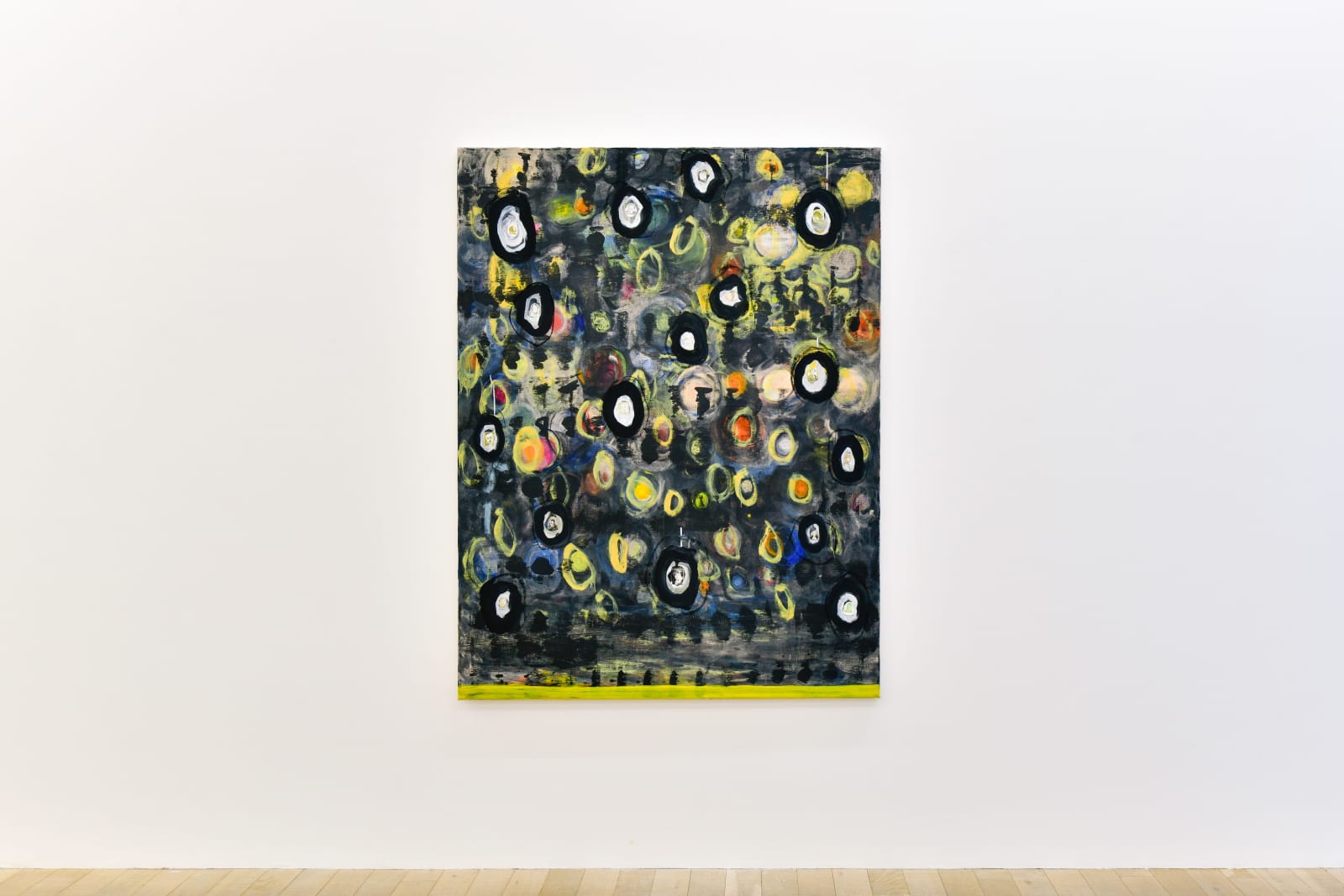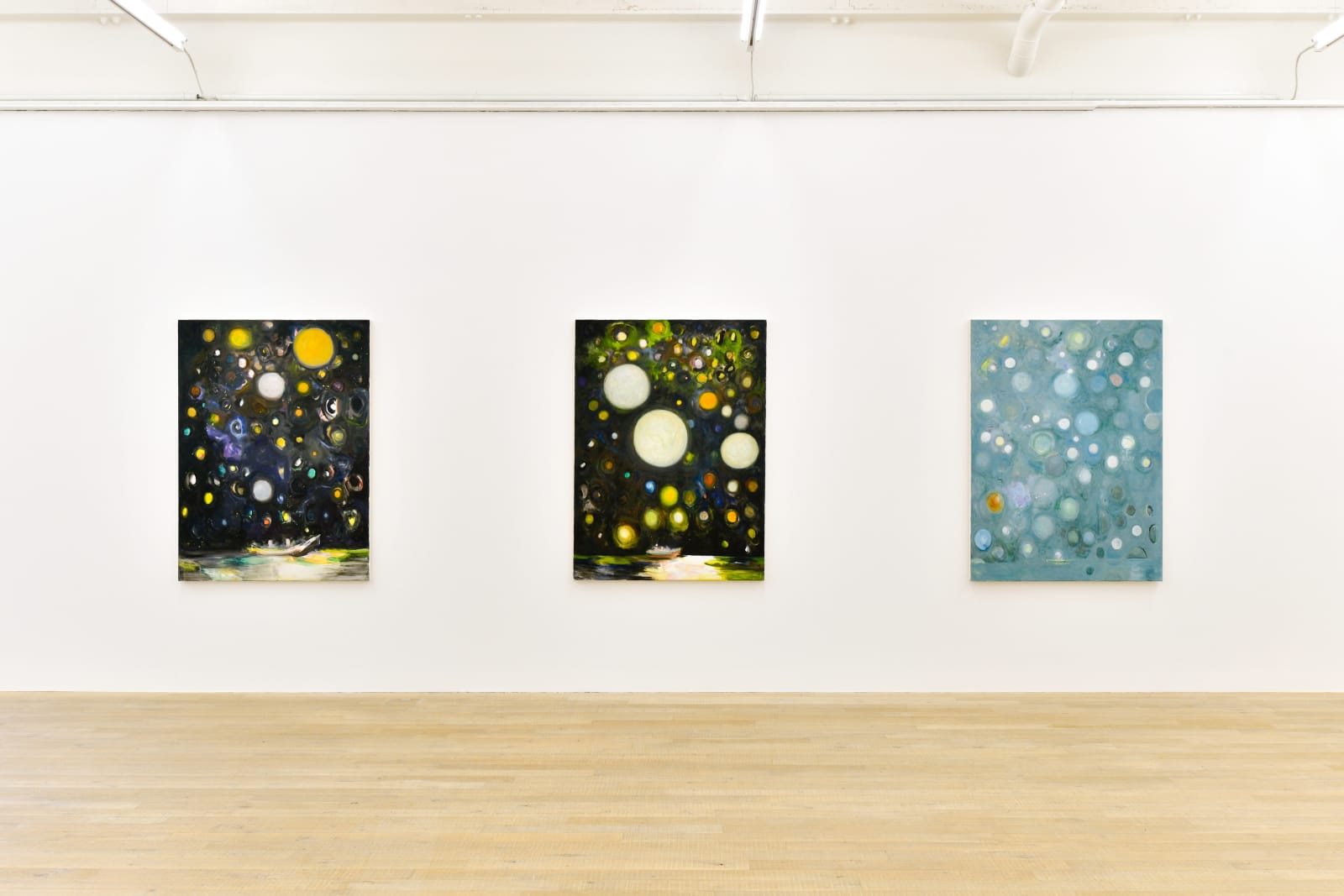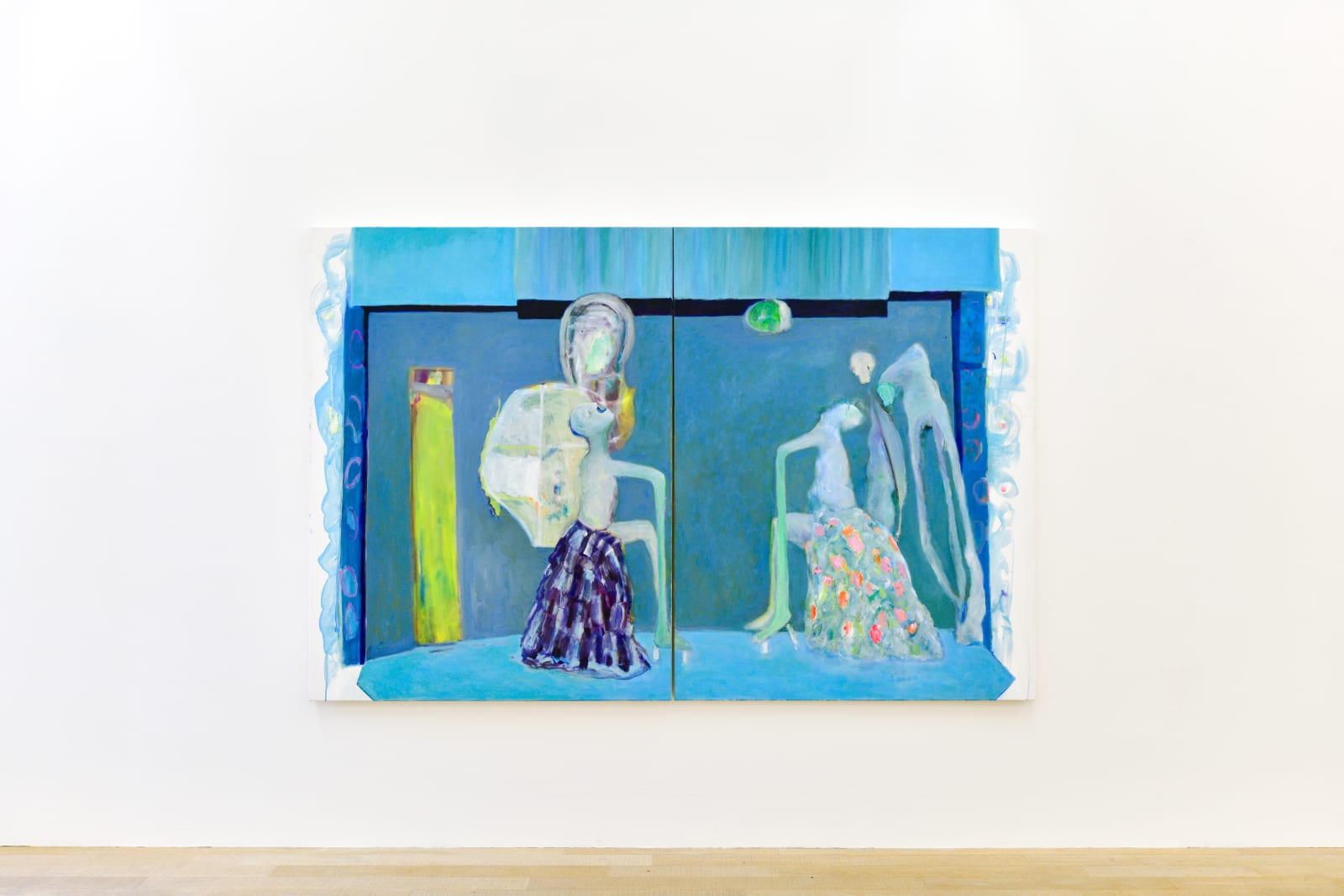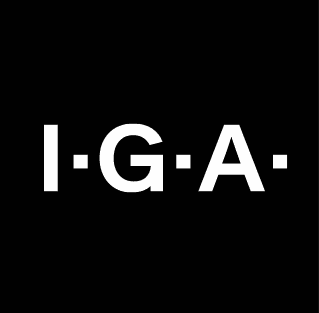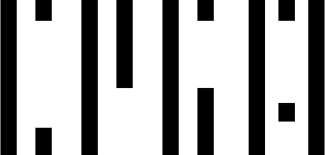Valérie Favre: Bateaux des poètesGalerie Peter Kilchmann, Zahnradstrasse, Zurich
Galerie Peter Kilchmann is pleased to present Bateau des poètes (Ship of Poets), the third solo exhibition by Swiss artist Valérie Favre (*1959 in Evilard near Biel; lives and works in Berlin) at the gallery's headquarters (Maag-Areal). The focus of the exhibition will be on three groups of works that deal respectively with questions about the cosmos, transience and transcendence, both on a philosophical as well as on a poetic level. The subjects of the individual paintings are interwoven through a profound repertoire of references from literature, art history and mythology; and at the same time, they refer to earlier groups of works by the artist. The exhibition will span two rooms of the gallery and will include new paintings in various formats.
June 11 - July 14, 2021
-
 Valérie FavreBateau des poètes (Diane Arbus, Boris Ryzhy, Unica Zürn, Mark Rothko), 2020Tempera, pastel and collage (linocut) on canvas250 x 195 cm (98.4 x 76.8 in.)
Valérie FavreBateau des poètes (Diane Arbus, Boris Ryzhy, Unica Zürn, Mark Rothko), 2020Tempera, pastel and collage (linocut) on canvas250 x 195 cm (98.4 x 76.8 in.) -
 Valérie FavreBateau des poètes (Albert Einstein), 2021Oil and pastel on canvas150 x 110 cm (59.1 x 43.3 in.)
Valérie FavreBateau des poètes (Albert Einstein), 2021Oil and pastel on canvas150 x 110 cm (59.1 x 43.3 in.) -
 Valérie FavreBateau des poètes (Dante Alighieri), 2020Oil on canvas170 x 130 cm (66.9 x 51.2 in.)
Valérie FavreBateau des poètes (Dante Alighieri), 2020Oil on canvas170 x 130 cm (66.9 x 51.2 in.) -
 Valérie FavreBateau des poètes (Unica Zürn, Diane Arbus, Wladimir Majakowski), 2020Ink, pastel and collage (watercolor, pencil) on canvas170 x 130 cm (66.9 x 51.2 in.)
Valérie FavreBateau des poètes (Unica Zürn, Diane Arbus, Wladimir Majakowski), 2020Ink, pastel and collage (watercolor, pencil) on canvas170 x 130 cm (66.9 x 51.2 in.) -
 Valérie FavreBateau des poètes, 2020Pigment, acrylic, pastel and collage (watercolor) on canvas170 x 130 cm (66.9 x 51.2 in.)
Valérie FavreBateau des poètes, 2020Pigment, acrylic, pastel and collage (watercolor) on canvas170 x 130 cm (66.9 x 51.2 in.) -
 Valérie FavreBateau des poètes (Georg Trakl, Cesare Pavese, Ana Mendieta, Stig Dagerman, Virginia Woolf, Beatrice Hastings), 2020Tempera, pastel and collage (watercolor, pencil) on canvas170 x 130 cm (66.9 x 51.2 in.)
Valérie FavreBateau des poètes (Georg Trakl, Cesare Pavese, Ana Mendieta, Stig Dagerman, Virginia Woolf, Beatrice Hastings), 2020Tempera, pastel and collage (watercolor, pencil) on canvas170 x 130 cm (66.9 x 51.2 in.) -
 Valérie FavreBateau des poètes (Rosa Luxemburg, Pier Paolo Pasolini), 2020/ 2021Oil on cotton150 x 110 cm (59.1 x 43.3 in.)
Valérie FavreBateau des poètes (Rosa Luxemburg, Pier Paolo Pasolini), 2020/ 2021Oil on cotton150 x 110 cm (59.1 x 43.3 in.) -
 Valérie FavreLa Répétition, 2020/ 2021Diptych, oil on canvas170 x 260 cm (66.9 x 102.4 in.)
Valérie FavreLa Répétition, 2020/ 2021Diptych, oil on canvas170 x 260 cm (66.9 x 102.4 in.) -
 Valérie FavreLe cabinet chinois (nach James Ensor), 2020/2021Oil on canvas85 x 65 cm (33.5 x 25.6 in.)
Valérie FavreLe cabinet chinois (nach James Ensor), 2020/2021Oil on canvas85 x 65 cm (33.5 x 25.6 in.)




